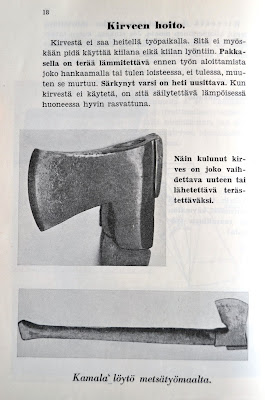I have been listening to the audiobook version of a series by Ralph Moody. In "The Fields Of Home" Ralph and his grandfather are going out to fell some blight damaged chestnut trees for a barn. When they arrive grandfather tells Ralph to start a fire because the axe heads need to be heated if they are not to bounce right off the trees in this cold. Is this a real thing? What explains it?
Thanks,
Robley
Thanks,
Robley




